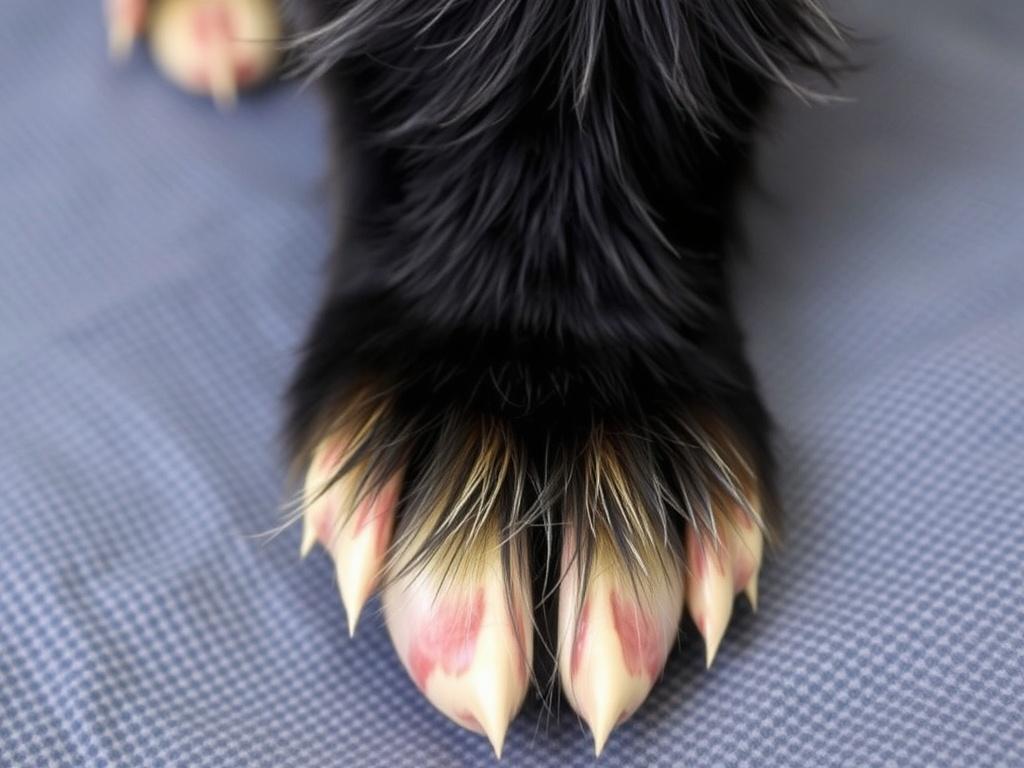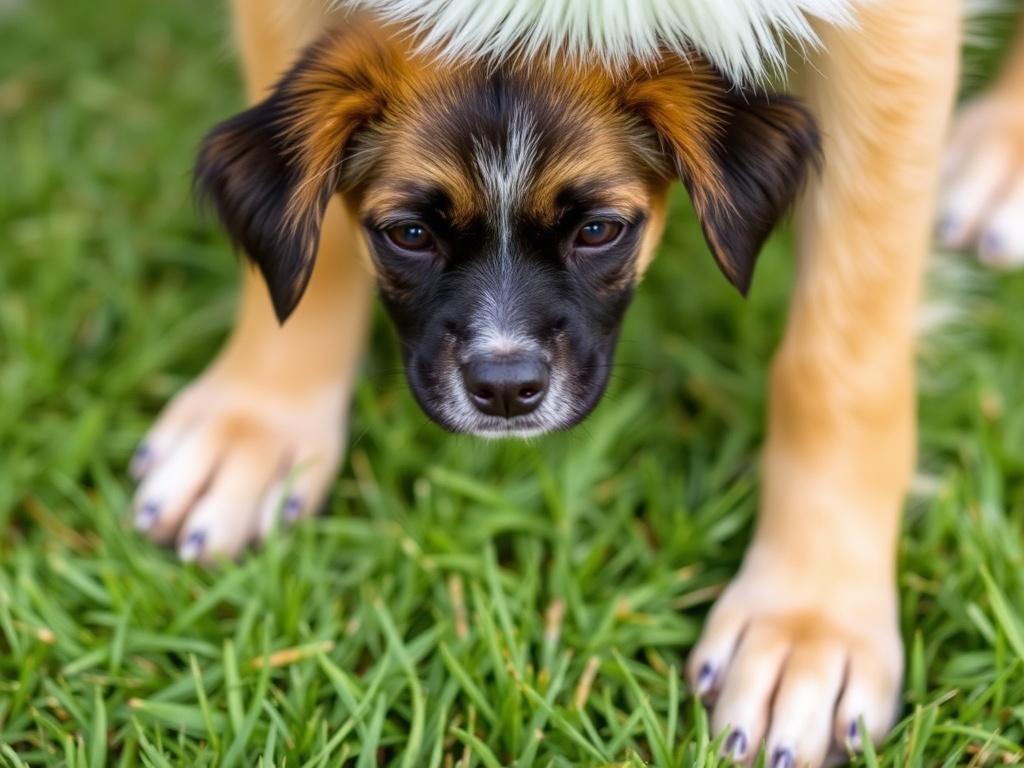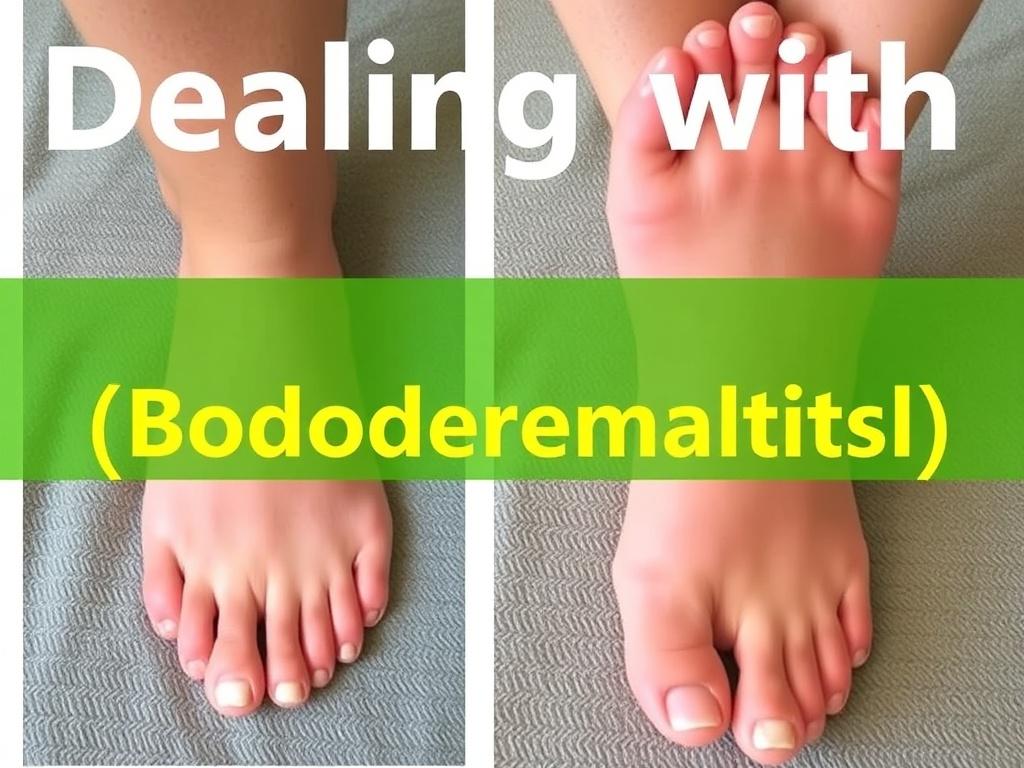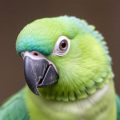Содержание
- What Is Bumblefoot (Pododermatitis)? The Basics
- Recognizing the Signs: What to Look For
- Common Causes and Risk Factors
- Diagnosis: What Your Veterinarian Will Do
- Treatment Options: From Home Care to Surgery
- Aftercare and Wound Management
- Prevention: The Best Treatment of All
- When to Call the Vet: Red Flags
- Common Questions and Misconceptions
- Comparing Treatment Approaches: Quick Reference
- Practical Supplies for Home Wound Care
- Recovery Timeline: What to Expect
- Cost Considerations and Planning
- Case Stories: What Recovery Can Look Like
- Working With Your Veterinarian: Tips for a Good Partnership
- Frequently Used Terms Explained
- Resources and Further Reading
- Practical Checklist: Step-by-Step If You Find a Suspected Bumblefoot
- Final Thoughts
- Conclusion
SQLITE NOT INSTALLED
Bumblefoot. Even the name sounds like something a bird might shrug off, but for pet birds, backyard chickens, and rehabilitated raptors, bumblefoot (pododermatitis) is a common and potentially serious foot infection that demands attention. This article is a friendly, thorough walkthrough of what bumblefoot is, how to recognize it, how veterinarians diagnose and treat it, and—perhaps most importantly—what you can do at home to support recovery and prevent it from happening again. Whether you keep chickens, parrots, ducks, or work with avian wildlife, this guide is written to be practical and reassuring, in plain language, and packed with actionable steps.
I’ll start by laying out what bumblefoot looks and feels like, move into causes and risk factors, then walk step-by-step through assessment, home care, veterinary options, and long-term prevention. You’ll also find comparisons of treatment approaches, lists of supplies commonly used in care, and sensible cautions about when to escalate to professional help. By the end you should feel prepared to spot trouble early, take safe first-aid measures, and partner effectively with your veterinarian for the best outcome.
What Is Bumblefoot (Pododermatitis)? The Basics
Bumblefoot, medically called pododermatitis, is an inflammatory condition of the foot pad and the underside of the toes. It ranges from mild redness and swelling to deep abscesses and chronic scarring. The problem typically starts as irritation—often from pressure, friction, or trauma—and can progress to infection when bacteria enter through a break in the skin. Common offenders are Staphylococcus species, but a variety of bacteria can be involved.
This condition is surprisingly common across species. Backyard chickens are prone because of heavy weight bearing and rough perches; parrots experience it from perching on inappropriate surfaces or obesity; waterfowl may develop it from prolonged wet bedding; raptors can develop deep, chronic lesions due to hunting injuries. The underlying theme is that pressure sores, foreign bodies, or wounds let microbes in—and once they’re inside, they can create pockets of infection that are often slow to resolve.
How Bumblefoot Develops
Think of bumblefoot like a human pressure sore that becomes infected. A small abrasion on the foot pad is the entry point. With continued pressure—standing on a wire-mesh cage floor, perching on the wrong diameter branch, or carrying excess weight—the lesion can deepen. Bacteria move in and create localized inflammation and sometimes a central core or abscess filled with pus and hardened material. If not addressed, the infection can tunnel, involve deeper tissues, and even reach bone (osteomyelitis), which makes treatment longer and more complex.
Recognizing the Signs: What to Look For
The earlier you detect bumblefoot, the better your bird’s chance of uncomplicated recovery. Early signs can be subtle.
- Changes in posture or favoring one foot
- Limping or reluctance to stand or perch
- Swelling, redness, or heat on the foot pad or toes
- Black scab-like spots or a small callus on the underside of the foot
- Open wounds, discharge, or a visible lump (the “bumble”)
- Decreased activity, appetite changes, or signs of pain
A table below summarizes signs by mild, moderate, and severe stages to help you assess urgency.
| Stage | Common Signs | What It Means |
|---|---|---|
| Mild | Redness, slight swelling, small scab or callus, mild favoring of foot | Early irritation or localized inflammation; often very treatable with prompt care |
| Moderate | Larger swelling, visible lump under foot, possible draining wound, limping | Likely infected; veterinary evaluation recommended; may need antibiotics and wound care |
| Severe | Deep abscess, chronic thickening, bone involvement suspected, severe lameness | Advanced infection; often requires surgery, prolonged antibiotics, and intensive care |
Common Causes and Risk Factors
Understanding what causes bumblefoot helps you prevent it. Usually it’s a combination of a trigger and continued stress on the foot.
- Poor perch design: perches that are too smooth, too small or too large in diameter, or made of wire can create pressure points.
- Hard or abrasive flooring: wire floors in cages or wet, soiled bedding that macerates the skin.
- Obesity: heavier birds put more pressure on their feet.
- Trauma: cuts, punctures, or foreign bodies like thorns can introduce bacteria.
- Age and inactivity: older or less-active birds may have weaker circulation and thicker calluses that crack.
- Nutritional deficiencies: poor diet weakens skin integrity and immune function.
- Environmental hygiene: dirty coops or enclosures increase bacterial load.
Species-Specific Notes
Different bird species have different risk profiles. Chickens often develop bumblefoot due to heavy weight and standing on rough surfaces. Parrots can get it from constant pressure on clipped claws or perches that don’t allow feet to wrap fully. Ducks and waterfowl often have issues tied to wet, contaminated bedding. Raptors may develop deep, serious infections from hunting-related injuries that are contaminated with soil or prey bacteria.
Diagnosis: What Your Veterinarian Will Do

When you bring a bird with suspected bumblefoot to a veterinarian—preferably an avian specialist—they’ll do a hands-on assessment and may recommend diagnostic tests to determine how deep the infection is and whether bone is involved.
Typical diagnostic steps:
- History and physical exam: how long the lesion has been present, changes in behavior, and environment.
- Palpation of the foot: checking for pain, fluctuant swelling, and location of the lesion.
- Cytology and culture: sampling discharge or material from the lesion to identify bacteria and antibiotic sensitivities.
- Imaging: X-rays (radiographs) to look for bone involvement; advanced imaging (CT) in complex cases.
- Blood tests: sometimes used to assess overall health and organ function prior to anesthesia.
The presence of bone changes on radiographs significantly affects the treatment plan and prognosis, so imaging is often essential in moderate to severe cases.
Treatment Options: From Home Care to Surgery
Treatment varies with severity. Below is a practical roadmap that guides you from initial home measures through veterinary interventions.
Immediate First Aid You Can Do at Home
If you discover a suspicious spot, you can take safe first-aid steps while arranging veterinary care. Be gentle—birds hide pain and may react unpredictably.
- Isolate and quiet the bird to reduce stress and movement.
- Gently clean the area with warm saline (salt water) or a dilute antiseptic recommended by your vet (e.g., chlorhexidine solution). Do not use harsh chemicals like hydrogen peroxide repeatedly; they can damage tissues.
- Apply a non-stick sterile dressing to protect the wound and keep it dry until you see the veterinarian.
- Limit standing on hard, wire, or abrasive surfaces—place soft bedding such as towels or foam padding under the bird’s feet.
- Contact your veterinarian promptly—don’t rely solely on home remedies if infection is suspected.
Veterinary Medical Treatments
Once evaluated, an avian vet may recommend one or more of the following:
- Antibiotics: prescribed based on culture when possible. Oral or injectable antibiotics are common.
- Analgesics (pain relief): to keep the bird comfortable during recovery.
- Topical therapy: medicated ointments can help, but clinical efficacy varies; they’re often used with wound care.
- Surgical debridement or abscess drainage: recommended for moderate to severe abscesses or if a central core is present.
- Bandaging and immobilization: to protect the area post-surgery and reduce pressure during healing.
- Follow-up imaging: to ensure resolution, especially if bone was suspected to be involved.
A key point is that many bumblefoot lesions contain a dense core of bacteria and necrotic material that antibiotics alone may not reach; surgical removal of that core often speeds healing and reduces recurrence.
Surgery: When and What to Expect
Surgical intervention is common for moderate to severe bumblefoot. The goal is to remove the infected core and any dead tissue, flush the area thoroughly, and allow healthy tissue to heal.
What typically happens:
- Anesthesia: the bird is anesthetized safely by a trained avian veterinarian.
- Debridement: the surgeon excises the abscess capsule and core, incises and drains the lesion, and removes any foreign material.
- Closure vs. open wound management: depending on contamination and tissue loss, the surgeon may partially close the wound or leave it open for continued drainage and packing.
- Bandaging: the foot is dressed with protective padding; the bird’s activity may be limited to prevent re-injury.
- Culture and histopathology: tissue may be submitted for laboratory analysis to guide antibiotics and rule out other issues.
Recovery from surgery requires rest, bandage changes, and strict monitoring. Birds often need several weeks to months for full resolution if the infection was deep.
Aftercare and Wound Management
Good aftercare is where many successful recoveries are made. A consistent schedule of wound cleaning, bandage changes, and environment adjustments speeds healing and reduces recurrence risk.
Bandage Care Basics
Bandages should keep the wound clean, reduce pressure, and absorb drainage without sticking to the tissue.
- Typical supplies: non-stick sterile pads, antibiotic ointment as directed by the vet, gauze, cohesive bandage wrap, and padding material (foam or felt).
- Change frequency: initially may be daily or every other day depending on drainage; your vet will advise the schedule.
- Watch for swelling above the bandage or foul odor—both may indicate problems.
- Keep feet dry during bandage periods; use waterproof covers for brief outings only if approved by the vet.
Pain Management and Nutrition
Keeping your bird comfortable and well-nourished supports recovery.
- Pain control helps mobility and prevents stress-related complications—use only medications prescribed by the vet.
- High-quality nutrition supports immune function; consider adding vitamin supplements only if recommended by your avian veterinarian.
- Encourage gentle exercise as allowed—complete immobility can delay recovery but excess activity can damage the healing site.
Prevention: The Best Treatment of All
Preventing bumblefoot is often easier than treating it. Address the common causes and make your environment foot-friendly.
Practical Prevention Checklist
- Provide appropriate perches: multiple diameters, natural wood preferred, and covered with non-slip texture if needed.
- Avoid wire flooring: line wire cages or runs with solid surfaces or dense bedding that won’t stay wet.
- Keep bedding clean and dry: regular cleaning prevents bacterial buildup and foot maceration.
- Maintain healthy weight: monitor your bird’s condition and adjust diet and activity to avoid obesity.
- Inspect feet regularly: weekly checks can catch problems while they’re small.
- Address wounds promptly: bite marks, cuts, or foreign bodies should be cleaned and evaluated.
Perch Recommendations
Perch selection deserves special attention because it’s central to foot health. Use a variety of perch diameters so toes can wrap comfortably; rough, unsanded perches can abrade skin, but perches that are perfectly smooth are also problematic because they force feet to grip excessively.
| Perch Type | Best For | Notes |
|---|---|---|
| Natural wood branches | Most parrots, birds who like to chew | Provides variable diameter; avoid branches treated with chemicals |
| PVC or plastic perches | Temporary use | Can be cleaned easily but may be too smooth if sole size is incorrect |
| Rope perches | Parrots that like flexible surfaces | Can harbor bacteria if wet; replace when soiled |
| Sandpaper perches | Occasional use only | Can cause over-abrasion; avoid long-term use |
When to Call the Vet: Red Flags
Not every small scab is an emergency, but certain signs mean you should seek veterinary care promptly.
Urgent Signs
- Deep swelling, open wounds, or pus
- Severe lameness or inability to stand
- Systemic signs: lethargy, loss of appetite, breathing changes
- Persistent foul odor from the foot
- Failure to improve with initial home care or worsening condition
If bone involvement is suspected from X-rays, the treatment becomes more involved and time-sensitive. Early veterinary intervention often prevents a chronic, recurring problem that is harder to fix later.
Common Questions and Misconceptions
Let’s tackle some FAQs and myths that owners commonly encounter.
Can I treat bumblefoot at home without a vet?
Mild cases detected early might respond to careful home care (cleaning, protecting, modifying environment), but because infections can hide deep in tissues, a veterinary evaluation is strongly recommended. Never attempt complex procedures (like lancing or digging out an abscess) at home—this can push infection deeper and worsen outcomes.
Is surgery always necessary?
No. Mild surface lesions may heal with conservative care. But many cases contain a firm central core that will not resolve with antibiotics alone. Sentinel evaluation by a vet will clarify whether surgery is likely to speed recovery.
Are certain breeds or ages more susceptible?
Heavier birds and those with reduced mobility are more prone. Broody or sedentary birds and older individuals often develop thicker calluses that can crack and become infected. Breed-specific tendencies (e.g., large chickens) may increase risk.
Comparing Treatment Approaches: Quick Reference
Below is a simple comparison to help you understand trade-offs between conservative and surgical approaches.
| Approach | When Used | Pros | Cons |
|---|---|---|---|
| Conservative (cleaning, bandaging, antibiotics) | Mild to early lesions; when no central core suspected | Less invasive; can be initiated at home; lower immediate cost | May be slower; risk of recurrence if core present |
| Surgical debridement | Moderate to severe lesions; presence of abscess or core | Direct removal of infected tissue; often faster resolution | Surgical risks, anesthesia, higher initial cost, longer bandage care |
| Long-term management | Chronic or recurrent cases | Focuses on prevention; can reduce relapses | Requires ongoing effort and sometimes environmental changes |
Practical Supplies for Home Wound Care
If you’re caring for a bird recovering from bumblefoot, having the right supplies makes a huge difference. Your vet will recommend specifics, but a typical kit might include:
- Sterile saline solution or chlorhexidine solution (diluted as advised)
- Non-stick sterile pads and sterile gauze
- Antibiotic ointment prescribed or approved by your vet
- Cohesive wrap (VetWrap) and padding material (foam or felt)
- Small scissors, gloves, and waste bags
- Digital thermometer and a notebook to track changes
Recovery Timeline: What to Expect
Recovery time varies widely.
- Mild cases: days to a few weeks with consistent care.
- Moderate cases: several weeks of antibiotics and bandaging.
- Severe cases with surgery or bone involvement: multiple months, with staged bandage changes and follow-up imaging.
Patience and consistency pay off. Monitor the foot daily, keep follow-up appointments, and adjust home care based on veterinary guidance.
Monitoring Progress
Look for reduced swelling, less heat, decreasing drainage, and improved weight-bearing. Photographing the lesion every few days can help you and your vet objectively track healing. If progress stalls or reverses, contact your veterinarian to reassess.
Cost Considerations and Planning
Costs depend on species, severity, diagnostics (e.g., X-rays), surgery, and follow-up. Simple vet visits and topical care may be relatively inexpensive; surgical cases with anesthesia, laboratory tests, and prolonged medications increase costs.
If cost is a concern, discuss options with your vet—sometimes staged treatment or referral to less specialized but competent general practice can help, while recognizing specialized avian care often improves outcomes for complicated cases.
Case Stories: What Recovery Can Look Like
A few brief, anonymized examples can illustrate typical courses.
- Backyard hen with a small black scab: owner cleaned daily, provided softer bedding, and the lesion resolved in two weeks with no antibiotics.
- Pet cockatoo with a painful pad lesion: vet performed surgical debridement, followed by two weeks of antibiotics and careful bandaging; full use of the foot returned in six weeks.
- Rehabilitated raptor with deep puncture: culture-guided antibiotics plus surgery were required, and radiographs were needed to confirm bone healing over months of follow-up.
These stories underline that outcomes vary, but with attention and appropriate care, many birds recover fully.
Working With Your Veterinarian: Tips for a Good Partnership

A strong owner-veterinarian partnership improves outcomes. Be prepared when you call or visit:
- Have clear notes on the lesion’s onset, any known injuries, changes in behavior, and environmental conditions.
- Bring photos of the enclosure, perches, and bedding—sometimes the cause is environmental and easy to fix once identified.
- Ask about the pros and cons of conservative vs. surgical treatment, expected timeline, and follow-up plans.
- Discuss pain control, antibiotic options, and any dietary changes that might help recovery.
Honest, open communication, and following through with home-care instructions are vital.
Frequently Used Terms Explained
Pododermatitis
Pododermatitis is the medical term for inflammation of the foot skin. Bumblefoot is a descriptive common name often used when an abscess or nodule forms.
Abscess
A localized pocket of pus caused by infection. In birds’ feet, these can become firm and encapsulated, resisting antibiotics until removed.
Debridement
Surgical removal of dead or infected tissue to promote healing. In bumblefoot, debridement often includes removing the central core.
Osteomyelitis
Infection of the bone; complicates treatment and often requires longer antibiotic courses and more intensive monitoring.
Resources and Further Reading
If you’d like to deepen your knowledge, reputable resources include avian veterinary textbooks, your local avian veterinarian, and extension services for poultry owners. Be cautious with internet advice—ensure the source is veterinary-approved and species-appropriate.
Practical Checklist: Step-by-Step If You Find a Suspected Bumblefoot
- Calmly and gently restrain the bird; examine the foot carefully.
- Photograph the lesion for records and veterinary consultation.
- Gently clean with warm saline; avoid aggressive probing or home lancing.
- Provide soft bedding and limit walking on hard surfaces.
- Contact your veterinarian and describe findings; follow their triage guidance.
- If advised, bring the bird in for an exam and possible diagnostics.
- Follow the treatment plan closely: meds, bandage changes, environment fixes.
- Monitor progress and keep follow-up appointments; ask for help if healing stalls.
Final Thoughts

Bumblefoot can feel intimidating the first time you encounter it, but with quick recognition, appropriate veterinary involvement, and thoughtful home care, many birds recover well. The keys are attention to foot health, prevention through good husbandry, and trusting your veterinarian when an infection requires professional treatment. Keep learning, check those feet regularly, and don’t hesitate to seek help—your bird depends on you to notice the small things before they become big problems.
Conclusion
Bumblefoot (pododermatitis) is a manageable condition when caught early and treated thoughtfully; combining proper home care, environmental changes to reduce pressure and contamination, prompt veterinary evaluation for antibiotics or surgery when needed, and consistent follow-up will give your bird the best chance of a full recovery and a healthier, happier life.





